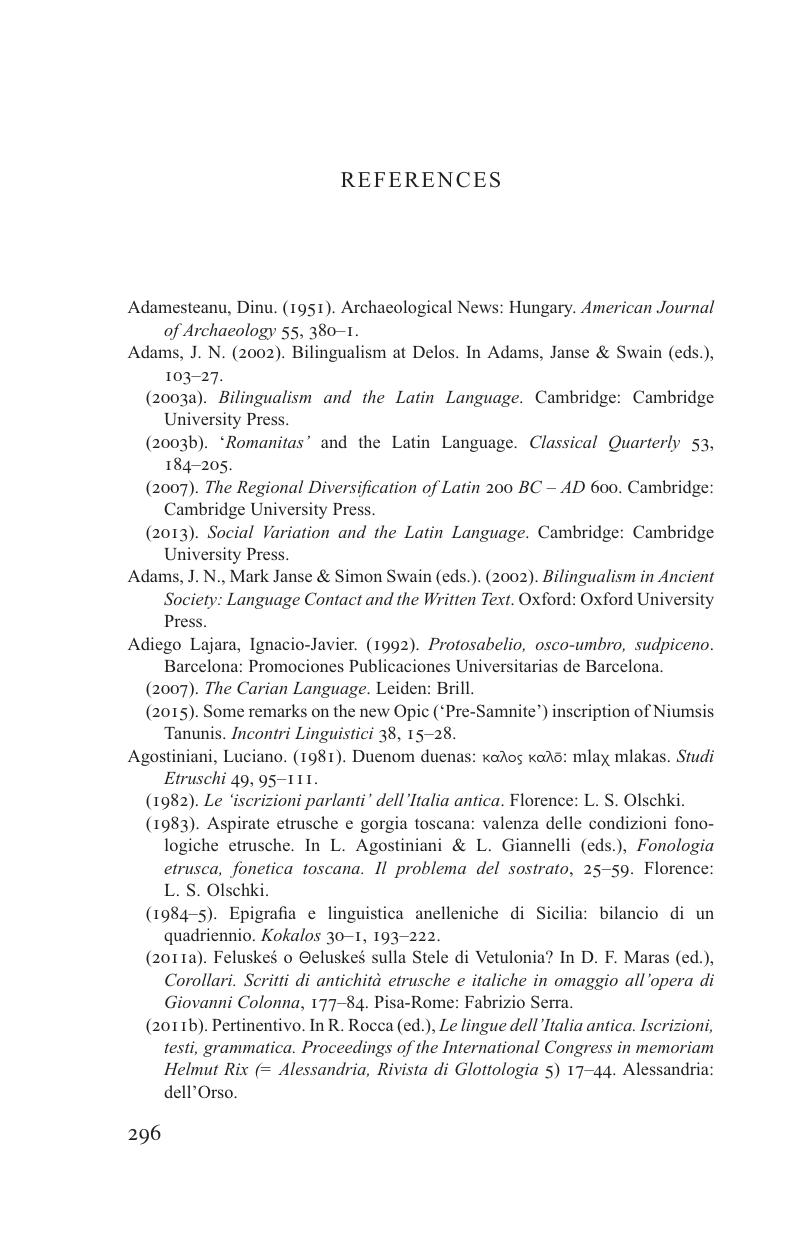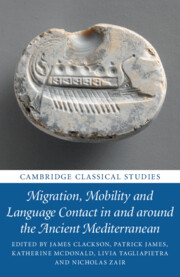Book contents
- Migration, Mobility and Language Contact in and around the Ancient Mediterranean
- Cambridge Classical Studies
- Migration, Mobility and Language Contact in and around the Ancient Mediterranean
- Copyright page
- Dedication
- Contents
- Figures
- Tables
- Contributors
- Acknowledgements
- Abbreviations of Ancient Authors and Works
- Abbreviations of Modern Sources
- Chapter 1 Introduction
- Chapter 2 Interethnic Mobility and Integration in Pre-Roman Etruria
- Chapter 3 Elusive Migrants of Ancient Italy
- Chapter 4 The Language of Mobile Craftsmen in the Western Mediterranean
- Chapter 5 Lost – and Found – in Transmission
- Chapter 6 Mobility and Orthography
- Chapter 7 The Mamertini in Messina
- Chapter 8 Migration, Identity, and Multilingualism in Late Hellenistic Delos
- Chapter 9 Interpretes, Negotiatores and the Roman Army
- Chapter 10 HOC PRIMVS VENIT
- Chapter 11 Population, Migration and Language in the City of Rome
- References
- Index Locorum
- Subject Index
- References
References
Published online by Cambridge University Press: 12 May 2020
- Migration, Mobility and Language Contact in and around the Ancient Mediterranean
- Cambridge Classical Studies
- Migration, Mobility and Language Contact in and around the Ancient Mediterranean
- Copyright page
- Dedication
- Contents
- Figures
- Tables
- Contributors
- Acknowledgements
- Abbreviations of Ancient Authors and Works
- Abbreviations of Modern Sources
- Chapter 1 Introduction
- Chapter 2 Interethnic Mobility and Integration in Pre-Roman Etruria
- Chapter 3 Elusive Migrants of Ancient Italy
- Chapter 4 The Language of Mobile Craftsmen in the Western Mediterranean
- Chapter 5 Lost – and Found – in Transmission
- Chapter 6 Mobility and Orthography
- Chapter 7 The Mamertini in Messina
- Chapter 8 Migration, Identity, and Multilingualism in Late Hellenistic Delos
- Chapter 9 Interpretes, Negotiatores and the Roman Army
- Chapter 10 HOC PRIMVS VENIT
- Chapter 11 Population, Migration and Language in the City of Rome
- References
- Index Locorum
- Subject Index
- References
Summary

- Type
- Chapter
- Information
- Publisher: Cambridge University PressPrint publication year: 2020



